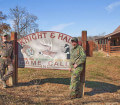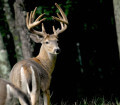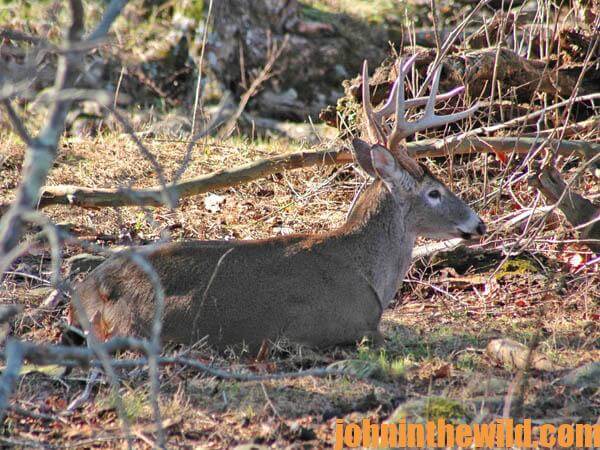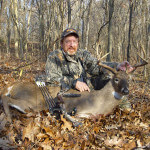John’s Note: David Hale, co-founder of Knight and Hale Game Calls in Cadiz, Kentucky, also co-produces the “Ultimate Hunting” TV show. Each year he travels the country doing TV shows and videos for Commonwealth Productions. When Hale and his partner Harold Knight go hunting, they have to produce animals for TV and video, and they use motion-sensor cameras to accomplish this task. As Hale explains, “We’ve been using motion-sensor cameras ever since they first came to the market.”
Landowners must remove feeders 30-45 days before the season begins in some states that permit feeding of the deer before the season.
Often during the rut, the deer already have well-established trails. In this instance, Hale says, “Once you’ve learned that you have a big deer on your property, and the feeders have been taken up, the first key is to put your cameras on funnel areas where the terrain necks-down a woodlot or a thicket. Then you’ll probably see deer traveling from one woodlot to the next, since they more than likely will pass through some type of funnel. The second key is to look for the dim trails, generally 20 to 30 yards on the downwind side of the main trails.”
Bucks most often will use the dim trails, and the does will utilize the other trails. Generally you’ll pinpoint trails 30-40 yards on either side of a heavily-used trail. Lightly-used trails usually will have thicker cover than the main trail, which will present more resistance for the animals as they move down these trails. According to Hale, “A buck can walk down the dim trail and smell the animals that are using the heavily-used trails. He often can determine if there’s an estrous doe walking that trail, while the buck stays in heavy cover and out of sight. I like to use a motion-sensor camera on those dim trails to catch a buck crossing them or utilizing a small opening. I want to identify a place where a buck will stop and look before he crosses a creek or an opening.”
To learn the most information about the deer, Hale sets-up his camera, so he gets the picture taken just as the buck crosses that opening to get more than a fast, blurry shot of the bucks. Hale prefers to set-up his cameras at, “Creek crossings, places where a buck may jump the fence or a downed tree that a buck may have to walk around.” He also locates bucks at bottlenecks where he sets-up the cameras. Hale says, “I love to hunt with my bow. I’ve found if you’re not hunting funnel areas, you can’t get deer in close enough to take them with a bow. The kinds of pinch points or squeezes that I like to hunt are woodlots where a point of woods sticks out into a field. That point of woods is often where most of the deer will enter the field, because they have the most cover going out into the field of any other spot on that field edge.
Some other-productive places will include:
a corner of a field where the deer can enter from a corner close to thick cover;
a narrow spot where two fields corner and leave a small strip of woods between those two corners of a field;
a creek crossing;
a spot on a fence where the deer have been jumping over a fence; or
a crawl space under a fence.”
To learn more about hunting deer, get John E. Phillips’ new eBooks “How to Hunt Deer like a Pro,” “PhD Whitetails,” and “Deer and Fixings.” Click here to get these books.
About the Author
John Phillips, winner of the 2012 Homer Circle Fishing Award for outstanding fishing writer by the American Sportfishing Association (AMA) and the Professional Outdoor Media Association (POMA), the 2008 Crossbow Communicator of the year and the 2007 Legendary Communicator chosen for induction into the National Fresh Water Hall of Fame, is a freelance writer (over 6,000 magazine articles for about 100 magazines and several thousand newspaper columns published), magazine editor, photographer for print media as well as industry catalogues (over 25,000 photos published), lecturer, outdoor consultant, marketing consultant, book author and daily internet content provider with an overview of the outdoors. Click here for more information and a list of all the books available from John E. Phillips.













